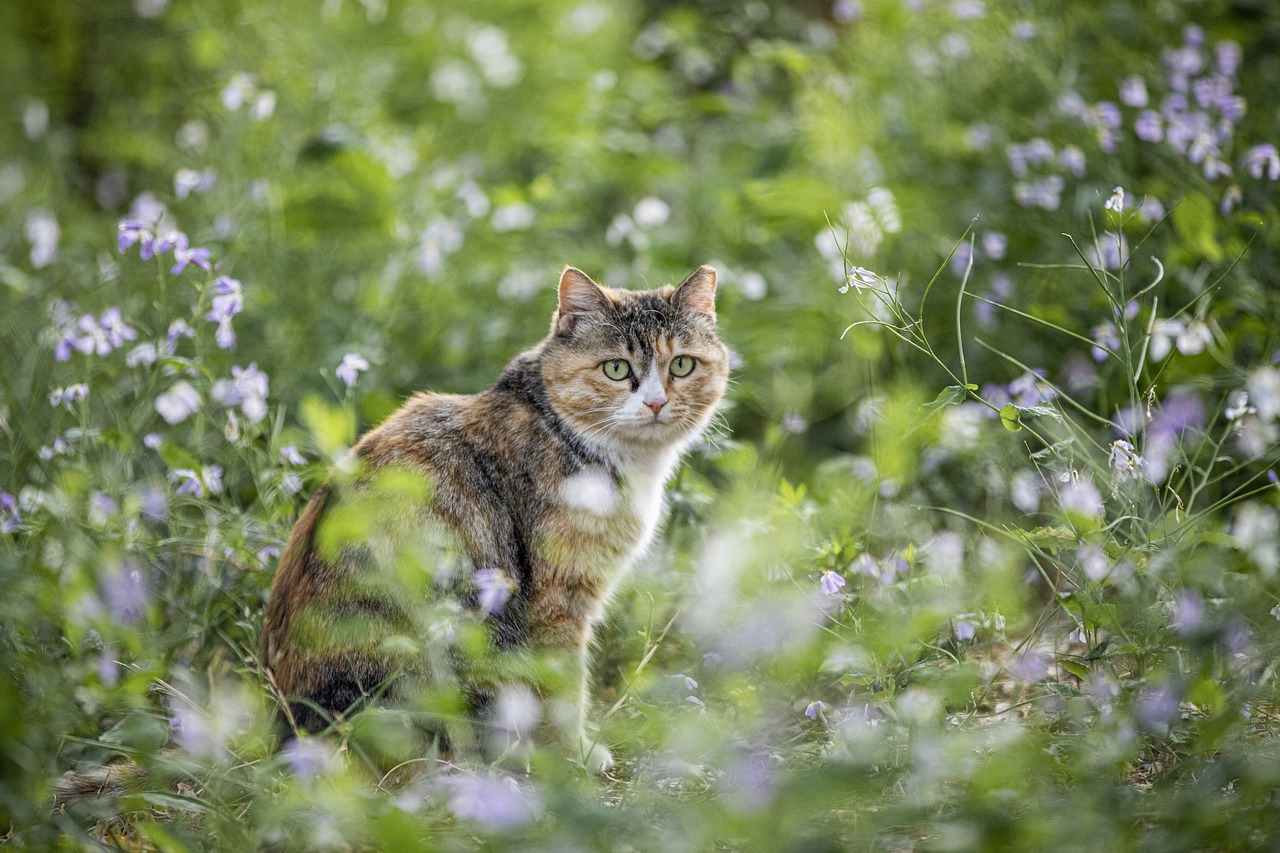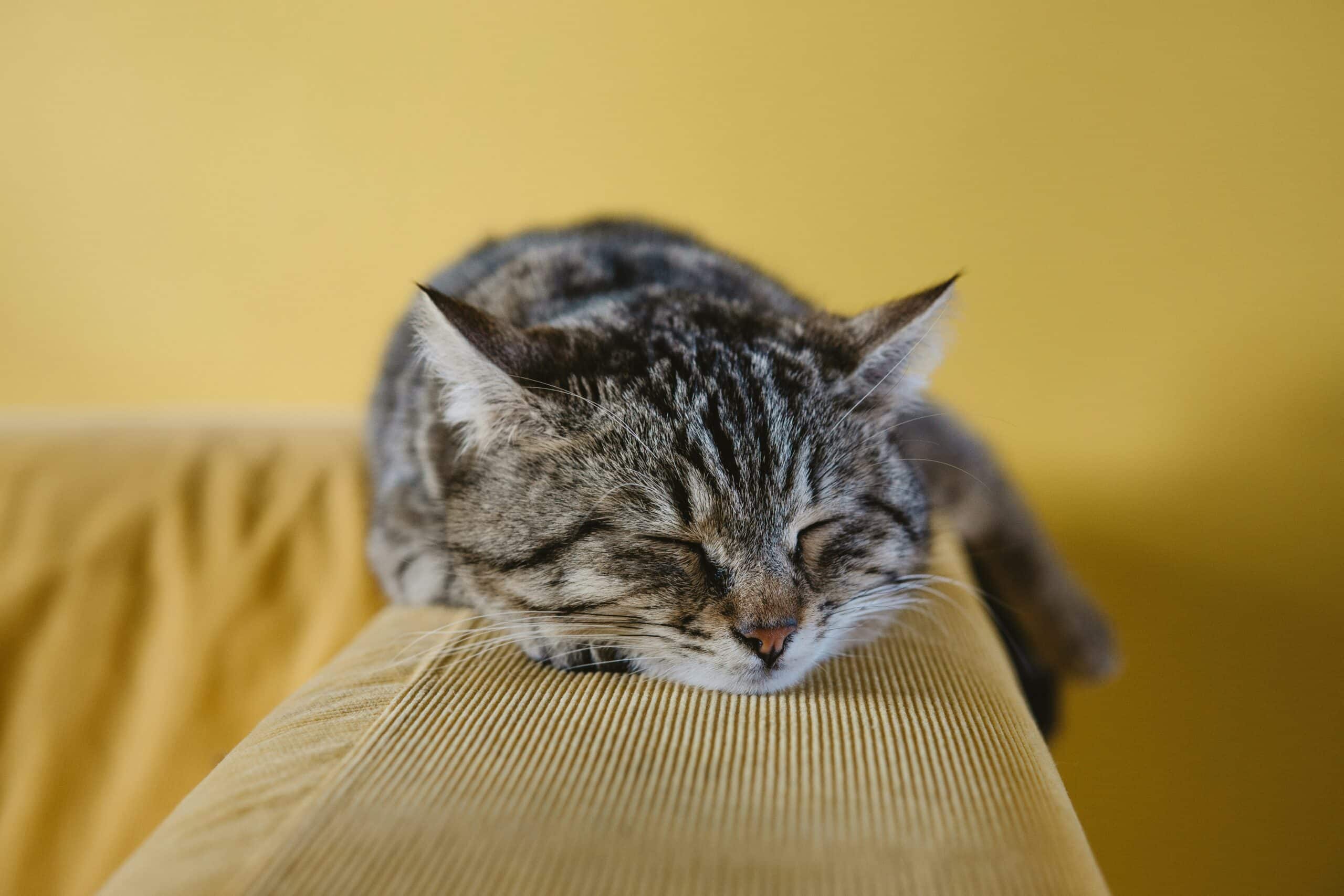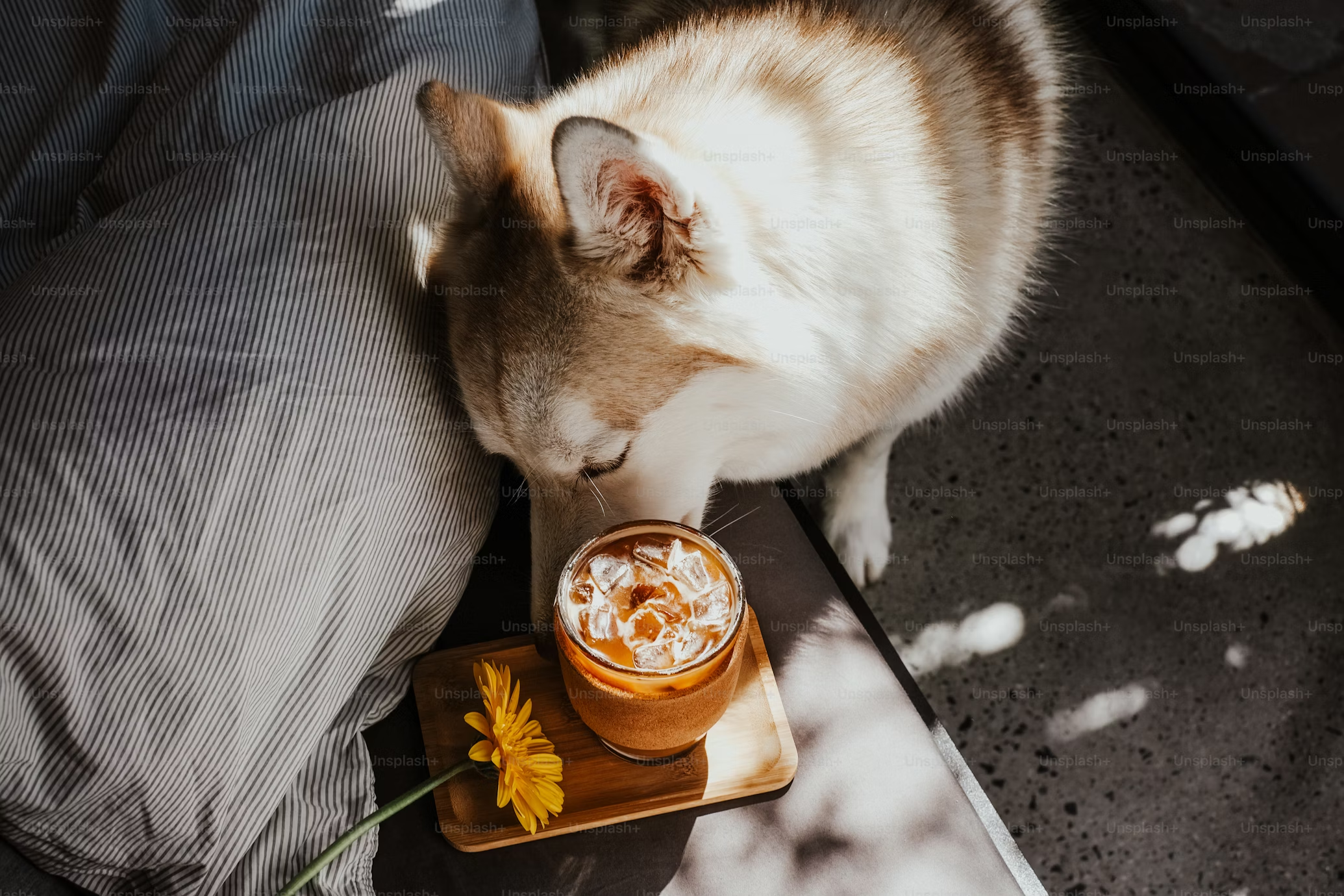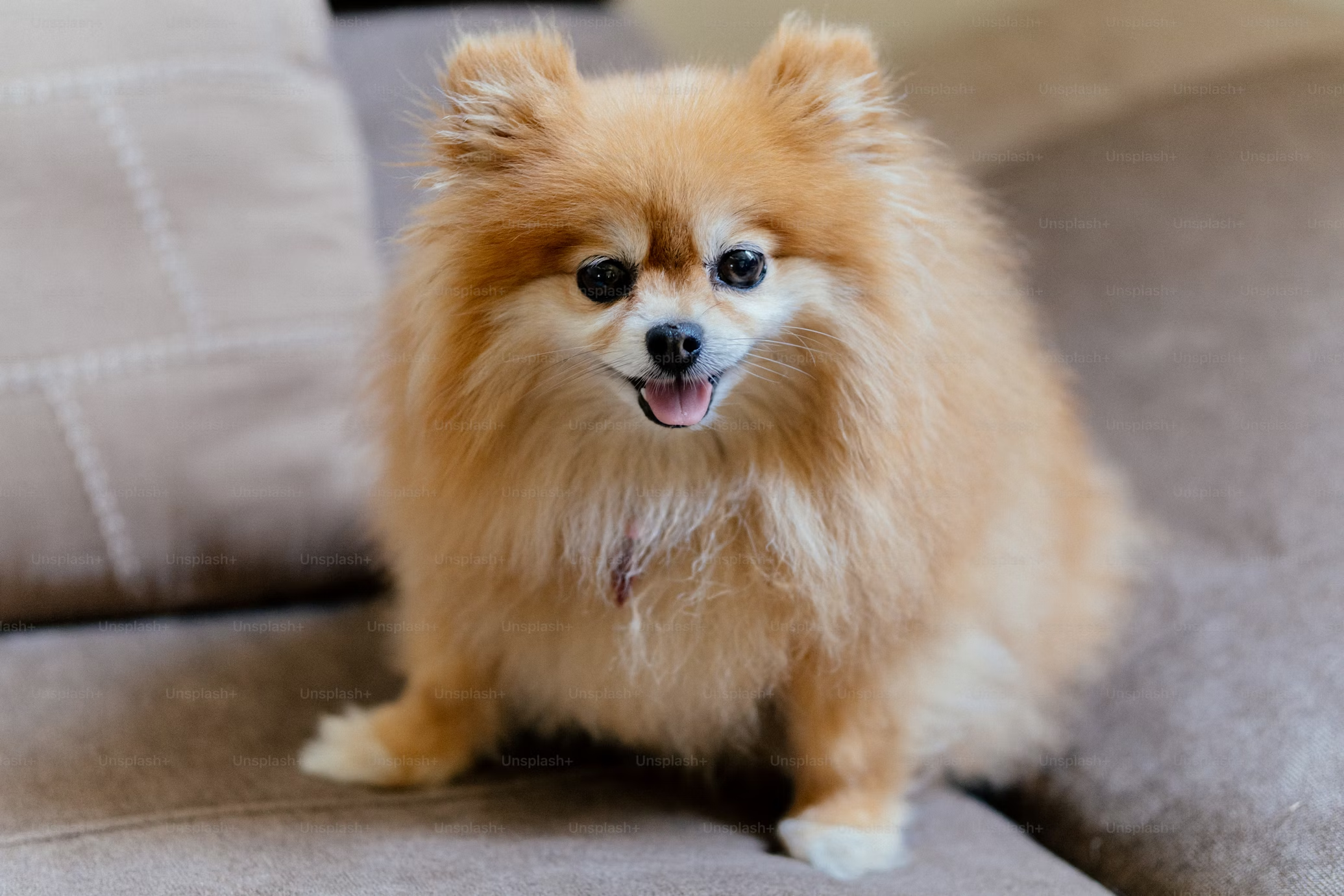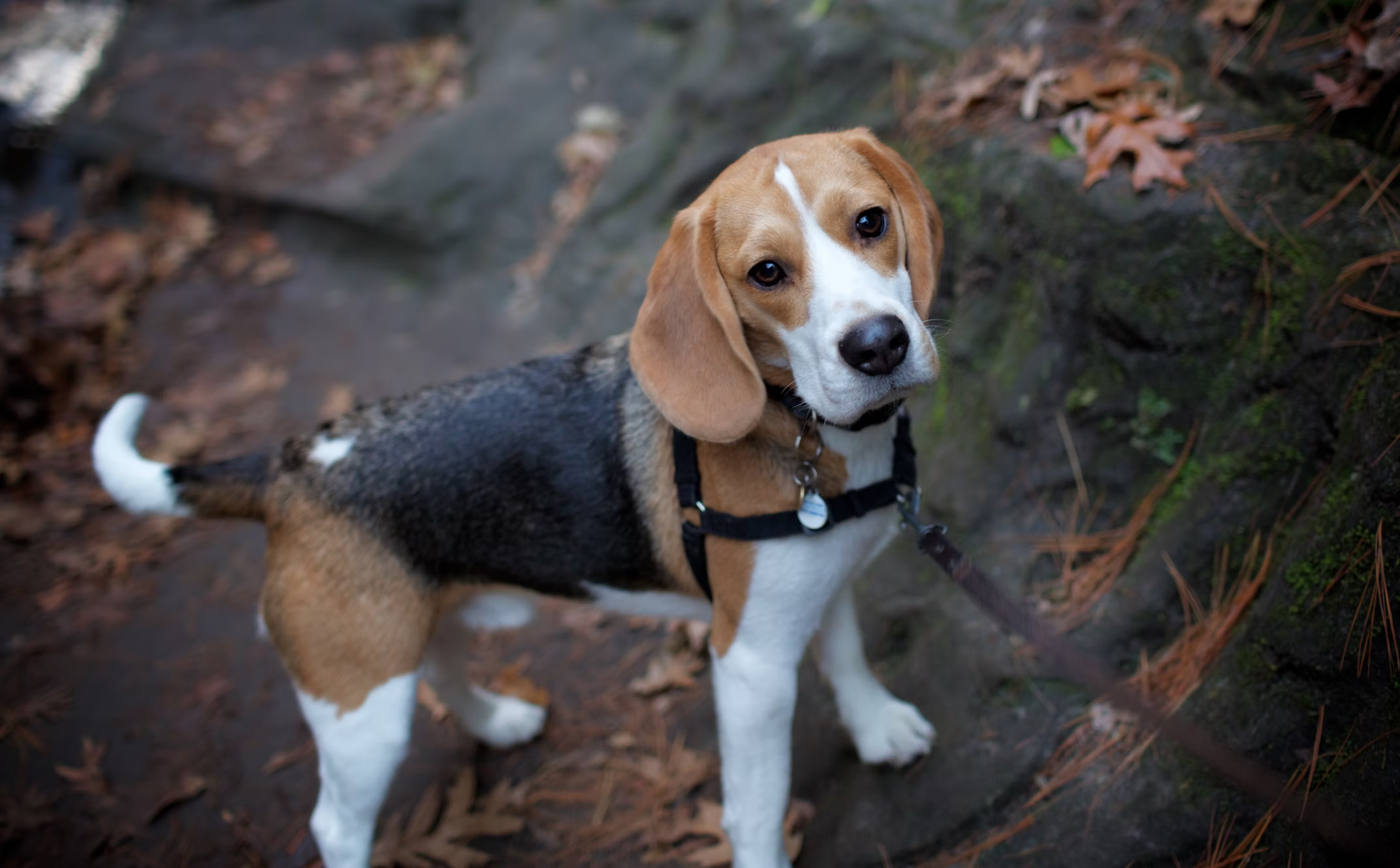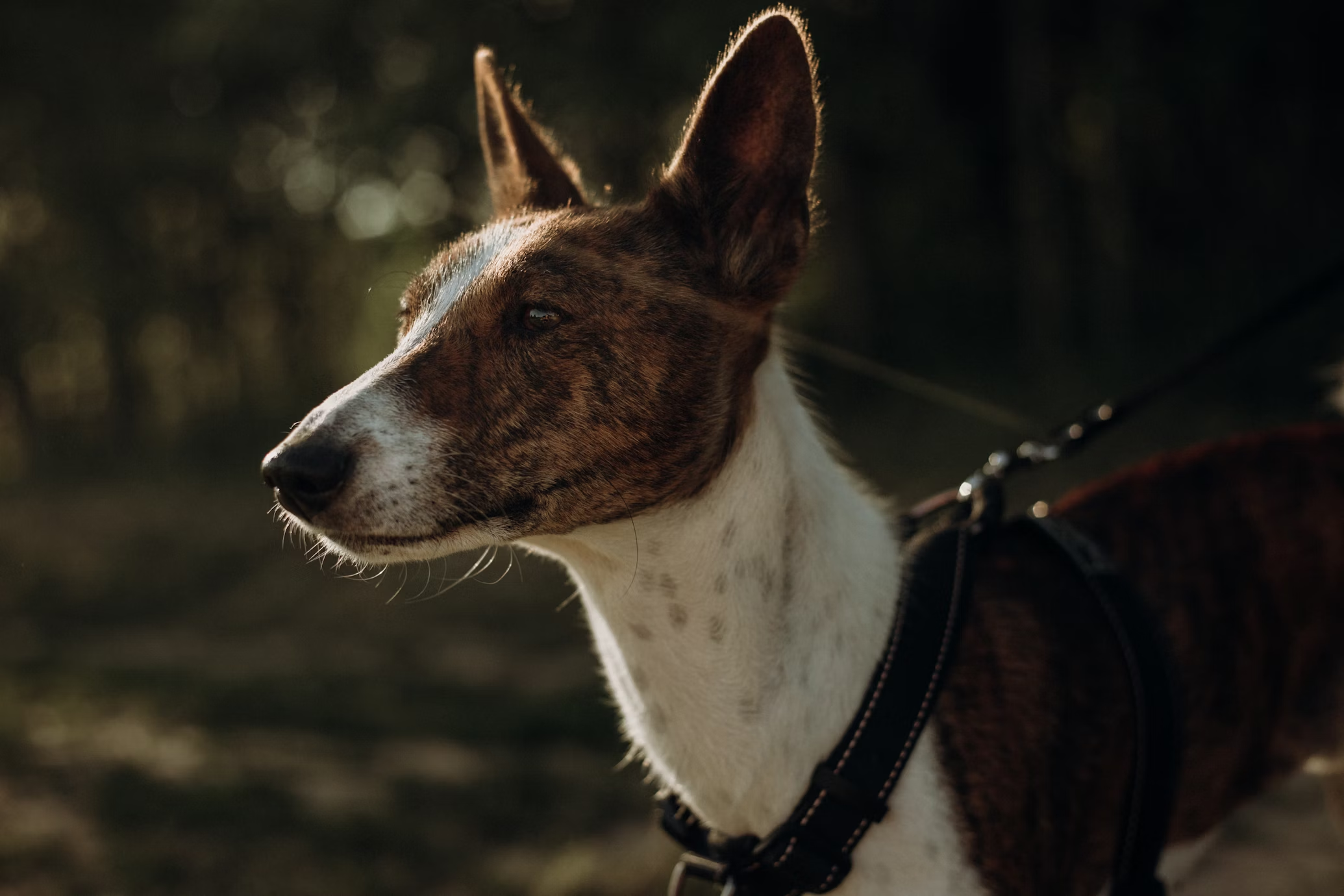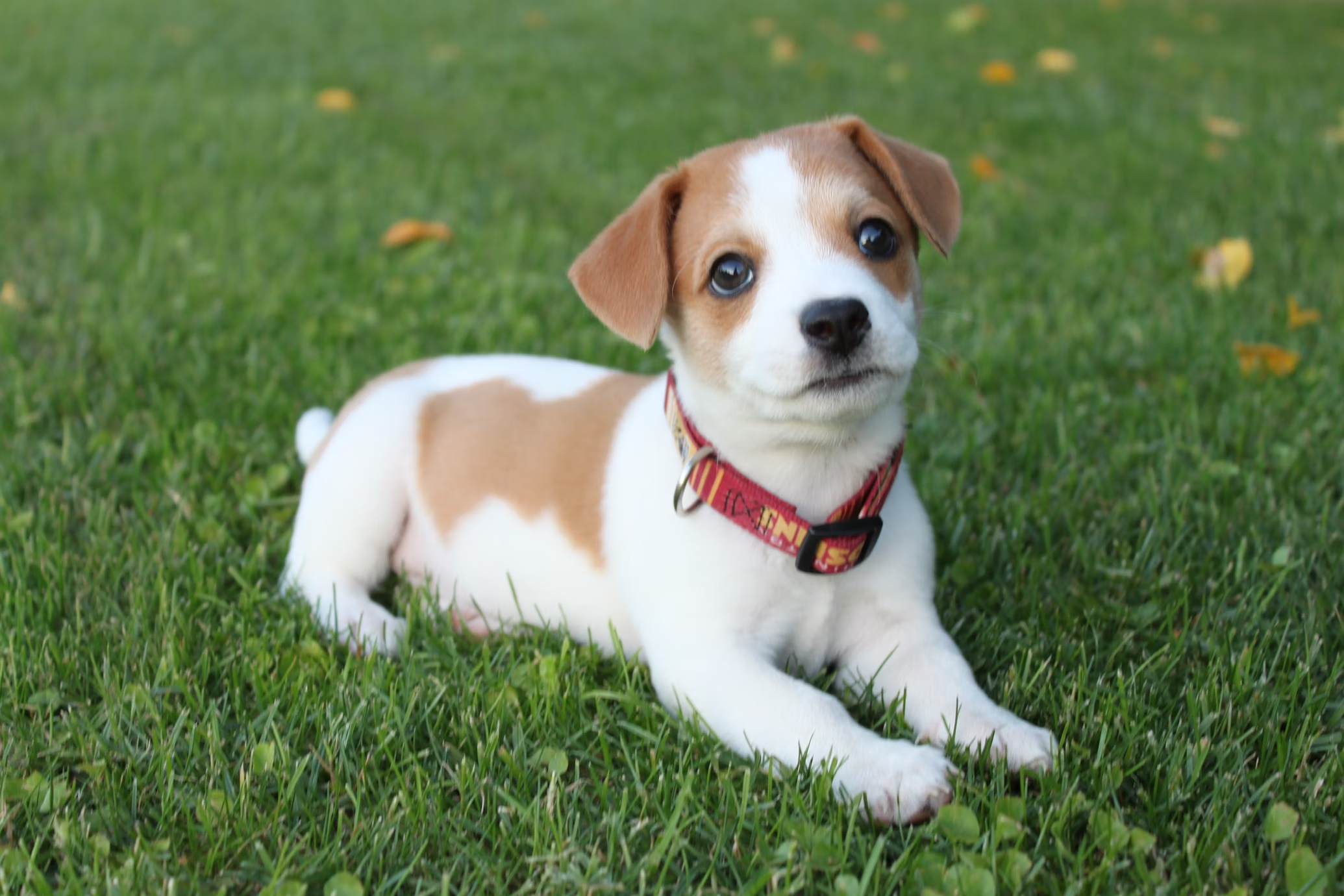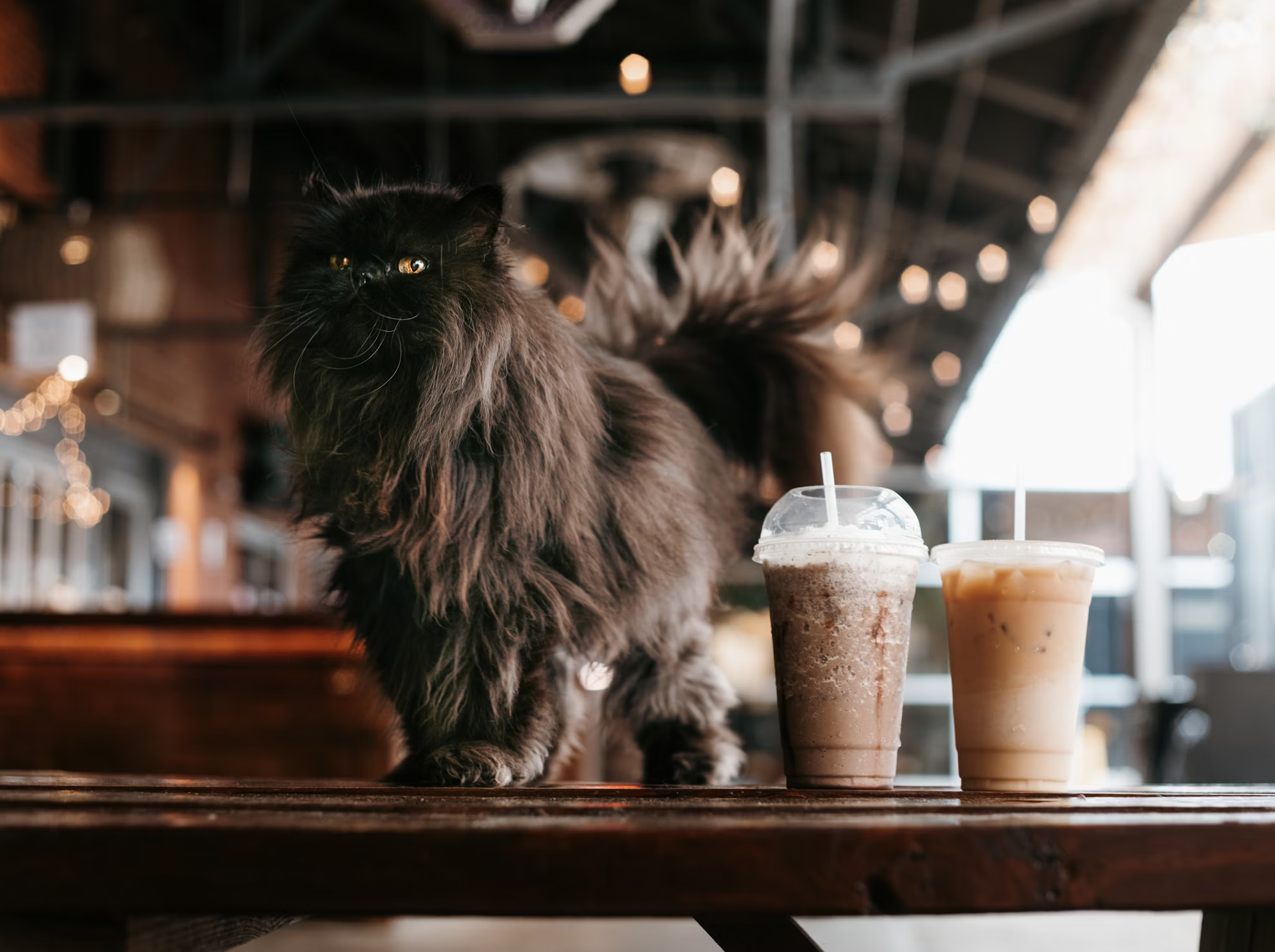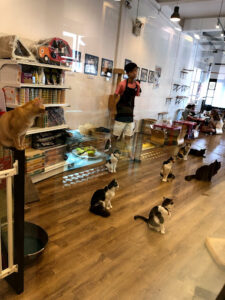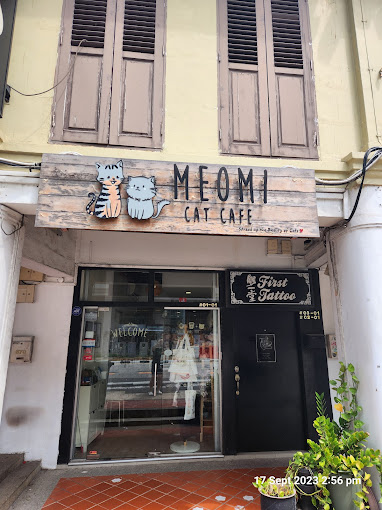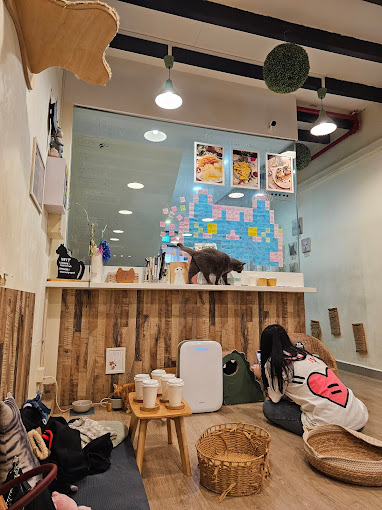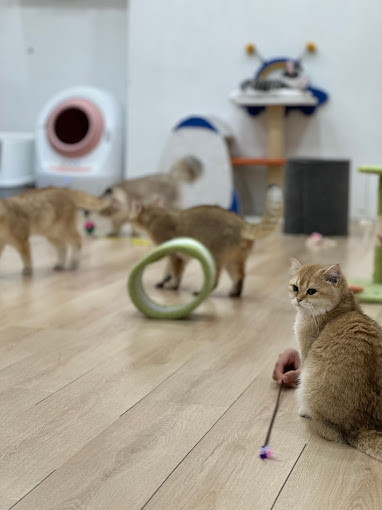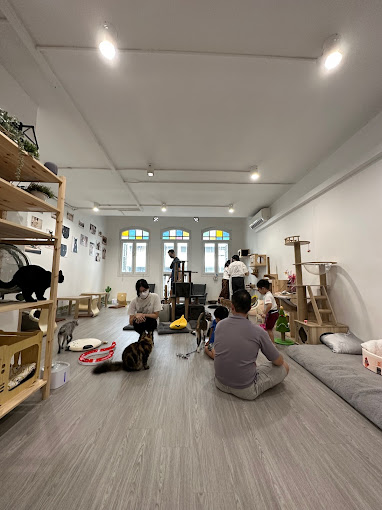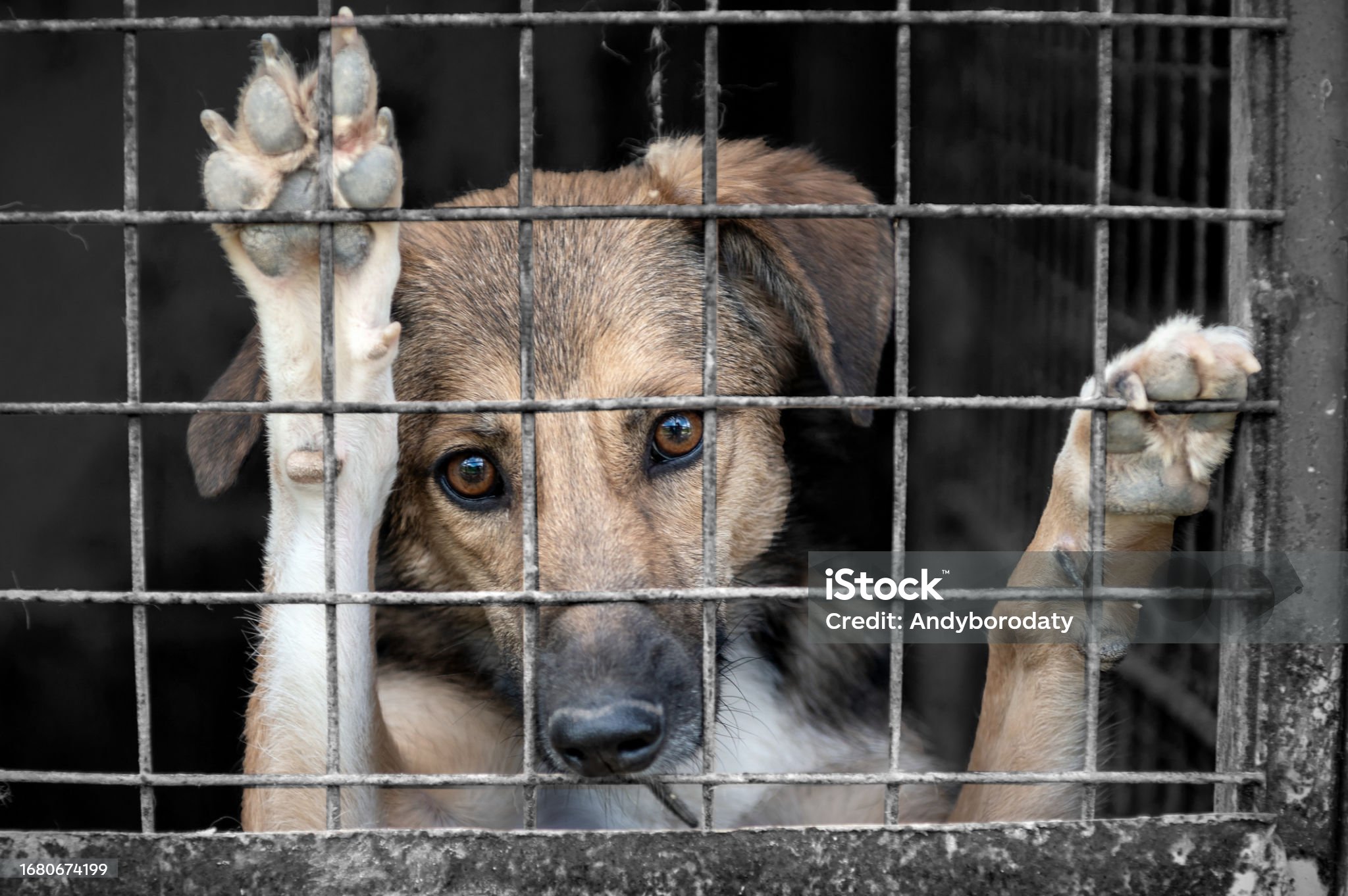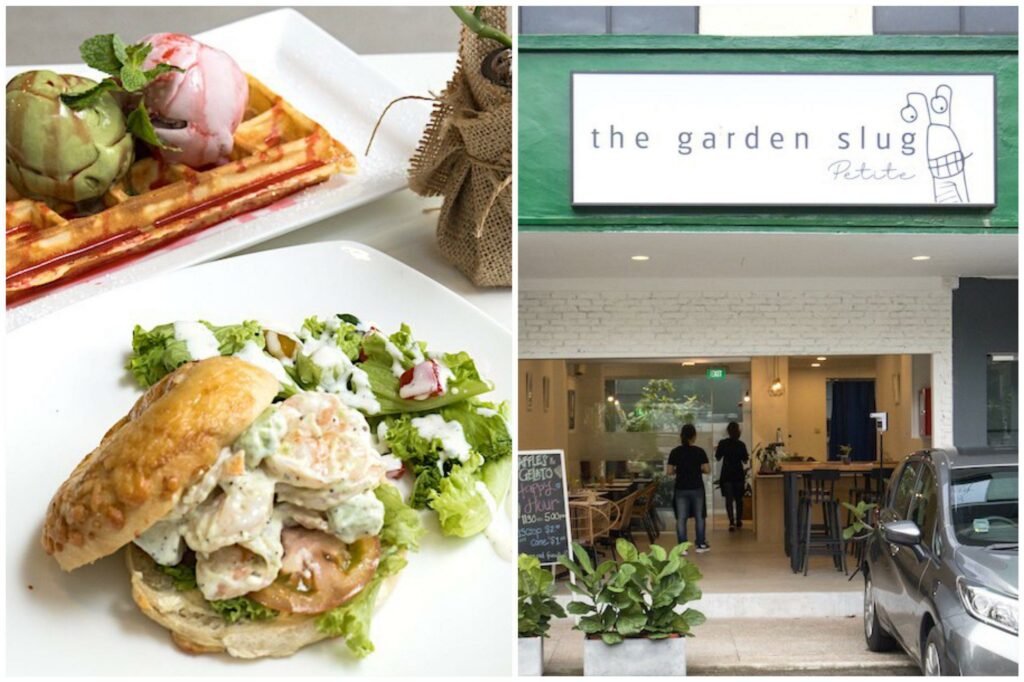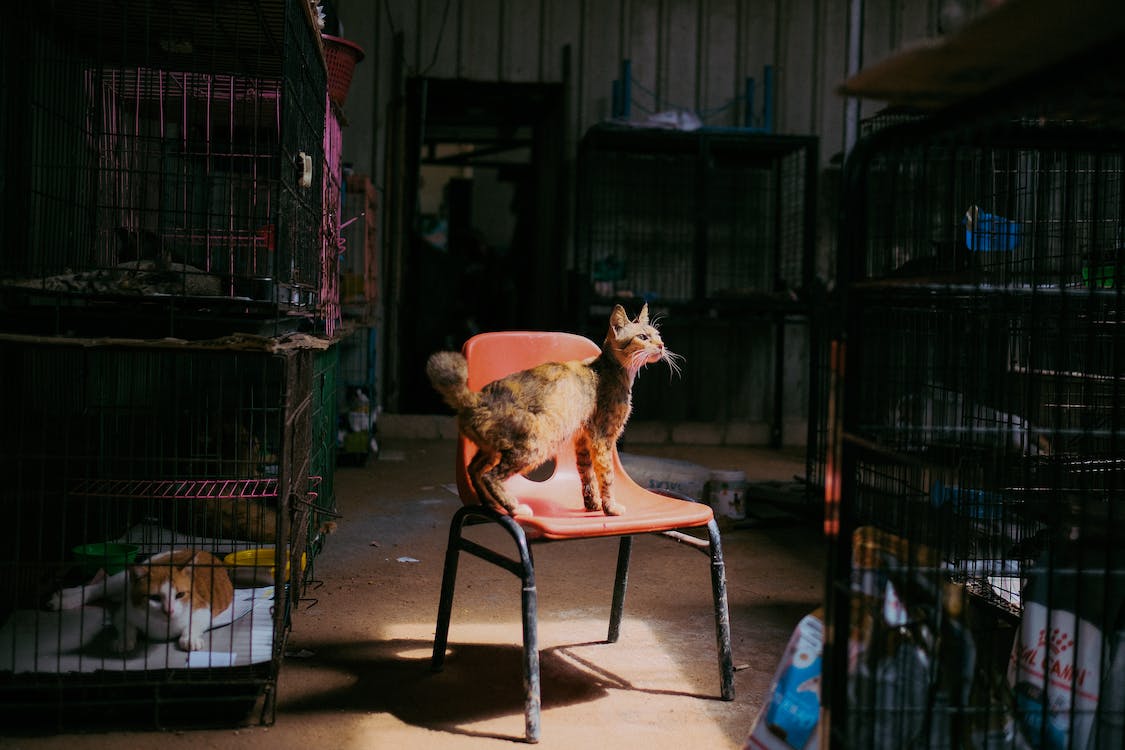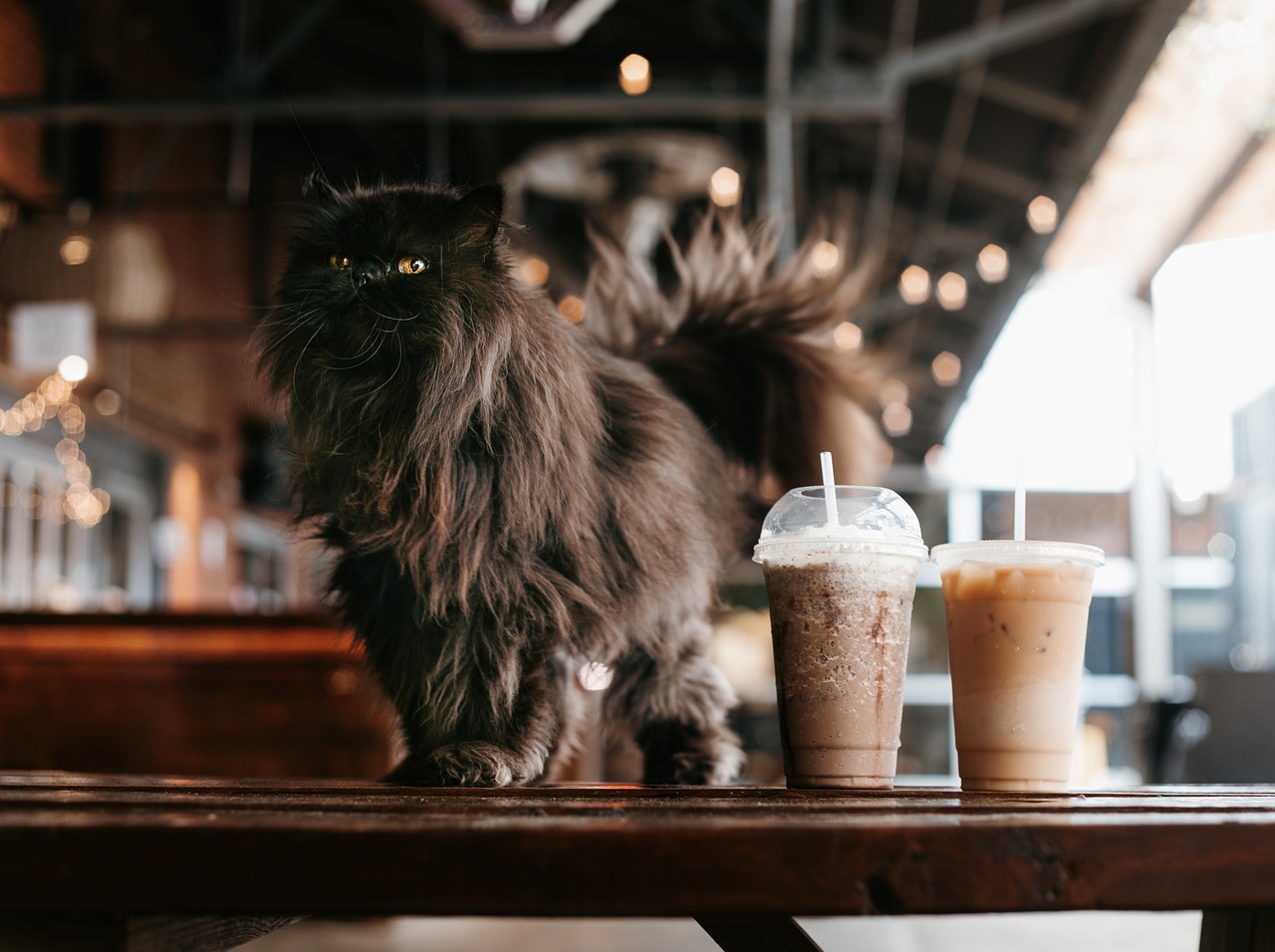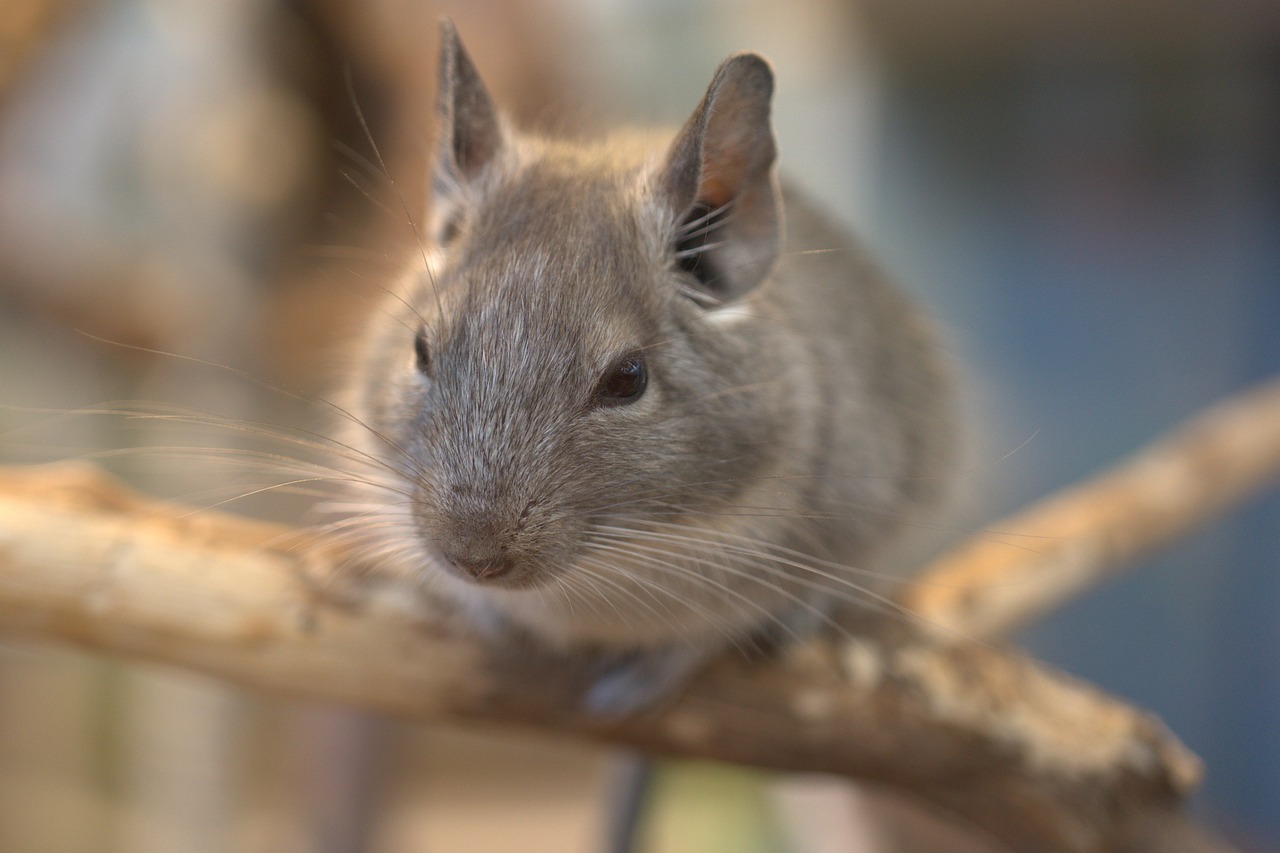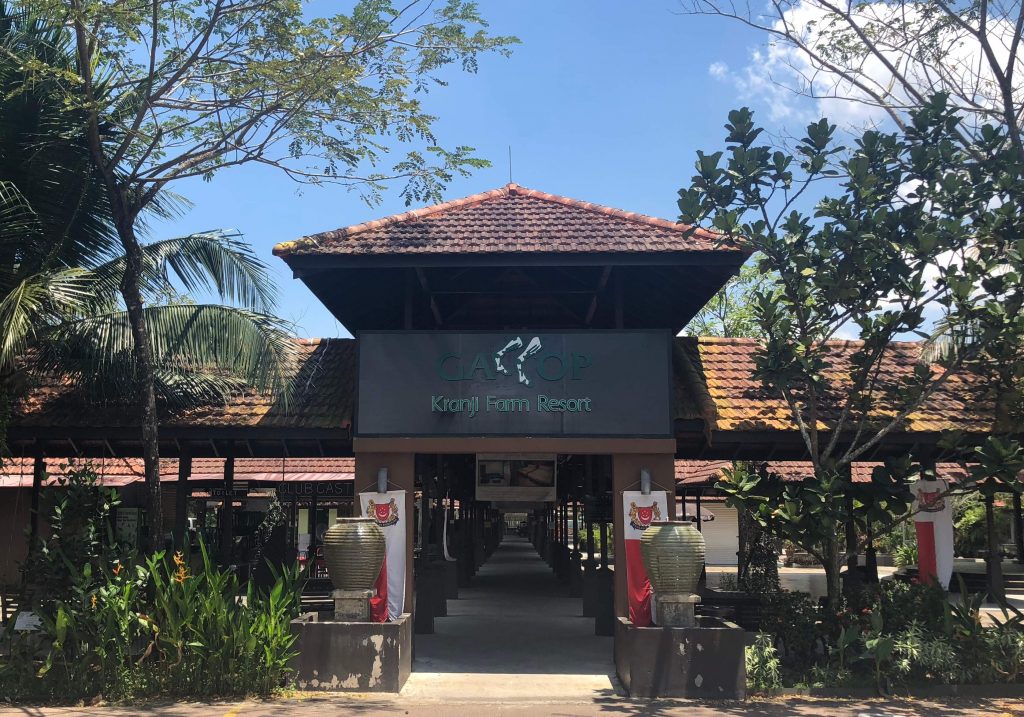Welcome to the purr-fect world of cat cafés in Singapore, where feline enthusiasts can indulge in a blend of coffee and cuddles. These unique establishments have taken the Lion City by storm, offering a haven for both cat lovers and those seeking a momentary escape from the bustling city life.
Step into one of these whimsical spaces, and you’ll be greeted by a cosy ambiance, aromatic coffee, and a delightful assortment of furry companions. From playful kittens to regal Maine Coons, each cat café has its own distinct charm and character, making it a must-visit for locals and tourists alike. Join us on a journey as we explore the top cat cafés in Singapore, where you’ll discover the joy of sipping your favourite brew while being serenaded by the gentle purrs and antics of our feline friends. So, why wait? Grab a cup of coffee and let’s embark on this blissful adventure together!
The rise of cat cafés in Singapore
Cat cafés have gained immense popularity in Singapore over the past decade. These unique establishments offer a haven for cat lovers, providing a space to relax, unwind, and interact with friendly felines. The concept originated in Taiwan in 1998 and quickly spread to other parts of Asia, including Singapore. The first cat café in Singapore, “Neko no Niwa,” opened its doors in 2013 (closed down in 2022) and was an instant hit among locals and tourists alike. Since then, the trend has only grown stronger, with more cat cafés popping up across the city-state.
The rise of cat cafés can be attributed to several factors. Firstly, Singaporeans have a deep love for animals, and cat cafés provide a unique opportunity to spend time with these furry companions without the responsibilities of pet ownership. Additionally, the fast-paced lifestyle in Singapore often leaves little time for relaxation and leisure activities. Cat cafés offer a much-needed escape from the stresses of daily life, allowing visitors to unwind in the soothing presence of cats while enjoying a cup of coffee or tea.
Another factor contributing to the popularity of cat cafés is their role in promoting animal welfare. Many cat cafés in Singapore collaborate with local animal shelters and rescue organizations, providing a temporary home for stray and abandoned cats. By offering these cats a safe and loving environment, cat cafés not only help raise awareness about animal welfare but also increase their chances of finding permanent homes.
The rise of cat cafés in Singapore has undoubtedly brought joy to countless cat lovers and created a thriving community of feline enthusiasts. Whether you’re a long-time cat lover or simply looking for a unique experience, visiting a cat café is a must.
Benefits of visiting a cat café
Visiting a cat café offers numerous benefits for both cat lovers and those seeking a momentary escape from the hustle and bustle of city life. Here are some of the advantages of spending time in a cat café:
Stress relief and relaxation
Interacting with cats has been scientifically proven to reduce stress levels and promote relaxation. The gentle purring, soft fur, and playful nature of cats can help melt away the worries of the day and provide a sense of calm.
Improved mood and mental well-being
Cats are known for their therapeutic qualities. Spending time with these furry creatures can boost serotonin levels, which are responsible for regulating mood and promoting feelings of happiness and well-being.
Social interaction
Cat cafés offer a unique social setting where visitors can connect with like-minded individuals who share a love for cats. Whether you’re a solo visitor or with a group of friends, cat cafés provide a welcoming environment to meet new people and bond over your shared affection for feline companions.
Educational experience
Cat cafés often provide information about cat breeds, behaviour, and care, allowing visitors to learn more about these fascinating animals. Whether you’re a seasoned cat owner or new to the world of cats, you’re likely to leave a cat café with a deeper understanding and appreciation for our feline friends.
Supporting animal welfare
Many cat cafés collaborate with local animal shelters and rescue organizations, helping to raise awareness about animal welfare and increase adoption rates. By visiting a cat café, you’re not only treating yourself to a delightful experience but also contributing to a worthy cause.
Visiting a cat café is a win-win situation, offering a range of benefits for both visitors and the resident cats. Now, let’s dive into the top cat cafés in Singapore and explore the unique features that make each one a purr-fect destination.
Popular cat cafés in Singapore
Singapore is home to a vibrant cat café scene, with each establishment boasting its own unique charm and character. Here are some of the top cat cafés in Singapore that are worth a visit:
Situated in the vibrant Bugis neighbourhood, The Cat Café offers a haven for cat lovers seeking respite from the city’s hustle and bustle. This spacious café is home to a diverse group of cats, each with their own unique personality. Visitors can enjoy a cup of gourmet coffee or tea while mingling with the resident felines, making it a purr-fect spot for relaxation and companionship.
Nestled in the charming Haji Lane, Meomi Cat Café is a hidden gem that delights visitors with its cosy ambiance and friendly cats. The café’s whimsical décor, featuring cat-themed artwork and colourful murals, creates a playful and inviting atmosphere. Guests can enjoy a range of beverages, including specialty coffees and refreshing mocktails, while cuddling up with the resident cats.
Each cat café in Singapore offers a unique experience, but they all have one thing in common: the opportunity to form a special bond with their resident cats. Now that you know where to find these feline havens, let’s dive deeper into the distinct features that make each cat café a must-visit destination.
Unique features of each cat café
The Cat Café
One of the largest cat cafés in Singapore, The Cat Café offers a spacious and inviting environment for visitors to interact with the resident cats. The café features a variety of seating options, including cosy nooks and window seats, allowing guests to find their perfect spot to relax and enjoy the company of these playful felines. The Cat Café also hosts regular events, such as cat yoga sessions and movie nights, providing an opportunity for visitors to engage in unique activities while surrounded by cats.
Meomi Cat Café
Meomi Cat Café stands out for its vibrant and whimsical décor. The cafe’s colourful murals and cat-themed artwork create a cheerful and playful atmosphere that complements the friendly nature of the resident cats. In addition to enjoying a cup of coffee or tea, visitors can participate in craft workshops and painting sessions, where they can create their own cat-themed masterpieces to take home.
Each cat café in Singapore has its own unique features and offerings, making it a worthwhile experience to visit multiple cafés and discover the purr-fect spot that resonates with you. However, before you embark on your cat café adventures, it’s essential to be familiar with the etiquette and rules that ensure a harmonious environment for both visitors and resident cats.
Cat café etiquette and rules
When visiting a cat café, it’s important to adhere to certain etiquette and rules to ensure the well-being and comfort of the resident cats. Here are some guidelines to keep in mind:
Respect the cats
While it’s tempting to shower the resident cats with attention, it’s crucial to remember that they are living creatures with their own boundaries. Always approach the cats gently and allow them to come to you if they’re interested in interacting. Avoid picking up or disturbing sleeping cats and be mindful of their body language, as some cats may prefer to observe from a distance.
Practice good hygiene
Cat cafés maintain strict hygiene standards to ensure the well-being of the cats and visitors. Wash your hands before and after interacting with the cats, and refrain from touching your face or eating while in the cat area. It’s also important to follow any additional hygiene guidelines provided by the cat café, such as wearing shoe covers or using hand sanitizers.
Avoid using flash photography
Cats can be sensitive to bright lights and sudden flashes. To avoid causing distress to the resident cats, refrain from using flash photography in the cat area. If you wish to take photos, use natural lighting or adjust your camera settings accordingly.
Be considerate of other visitors
Cat cafés can get busy, especially during peak hours. Be mindful of other visitors and ensure that everyone has an opportunity to interact with the cats. Avoid monopolizing a cat’s attention for an extended period and be aware of your surroundings to prevent accidental spills or mishaps.
By following these etiquette guidelines, you’ll not only ensure a pleasant experience for yourself but also contribute to a harmonious environment for the resident cats and other visitors. Now that you’re well-versed in cat café etiquette, let’s move on to the exciting topic of cat-themed merchandise and souvenirs.
Cat-themed merchandise and souvenirs
Cat cafés in Singapore offer a range of cat-themed merchandise and souvenirs that allow visitors to take a piece of their cat café experience home. Whether you’re a cat lover looking to add to your collection or searching for the purr-fect gift for a fellow feline enthusiast, you’ll find a plethora of options at these cat cafés. Here are some popular cat-themed merchandise and souvenirs you can expect to find:
Plush toys
Soft and cuddly, plush toys resembling the resident cats are a popular choice among visitors. These adorable companions make for a comforting reminder of your time spent with the cats and can be a delightful addition to any cat lover’s collection.
Artwork and prints
Many cat cafés collaborate with local artists to create unique cat-themed artwork and prints. These artistic creations range from whimsical illustrations to stunning portraits, allowing visitors to bring a touch of feline charm to their homes.
Apparel and accessories
Cat-themed apparel and accessories are a fun way to showcase your love for cats. From t-shirts and hoodies to earrings and tote bags, you’ll find a wide variety of cat-themed items that allow you to express your feline affection in style.
Stationery and home décor
For those who appreciate practical yet stylish cat-themed items, cat cafés offer an array of stationery and home décor options. From notebooks and calendars to mugs and coasters, you’ll find plenty of choices to add a touch of feline flair to your everyday life.
The cat-themed merchandise and souvenirs available at cat cafés are not only a lovely way to commemorate your visit but also a means to support the cafés and their efforts in promoting animal welfare. Now that you’re equipped with a wealth of knowledge about cat cafés in Singapore, let’s delve into the exciting events and activities that take place at these feline havens.
Events and activities at cat cafés
Cat cafés in Singapore go beyond providing a space for visitors to interact with resident cats. They also organize a variety of events and activities that add an extra layer of excitement and engagement. Here are some of the events and activities you can expect to find at cat cafés:
Cat yoga
Unwind and stretch your body while surrounded by the calming presence of cats. Cat yoga sessions offer a unique and relaxing experience, combining the benefits of yoga with the therapeutic effects of feline companionship.
Movie nights
Enjoy a cosy movie night with a twist at cat cafés that host cat-themed movie screenings. Snuggle up with a cup of coffee or tea and enjoy a cat-themed movie while being serenaded by the gentle purrs of the resident cats.
Craft workshops
Cat cafés often organize craft workshops where visitors can engage in creative activities while surrounded by cats. From painting sessions to jewellery making, these workshops provide an opportunity to unleash your creativity and create unique cat-themed masterpieces.
Adoption drives
Many cat cafés collaborate with local animal shelters and rescue organizations to host adoption drives. These events allow visitors to meet cats in need of forever homes and potentially find their perfect feline companion.
Attending events and activities at cat cafés not only enhances your experience but also provides an opportunity to connect with other cat lovers and contribute to the welfare of cats in need. Now, let’s hear what visitors have to say about their experiences at cat cafés in Singapore.


































